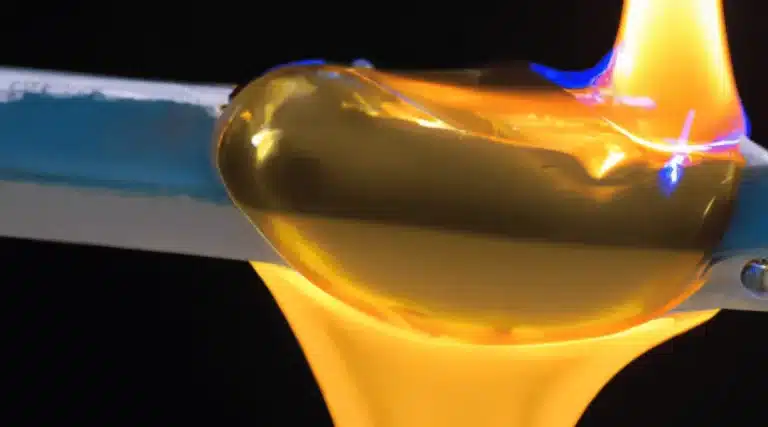Assembly adhesive is a type of bonding agent that is commonly used in the manufacturing and construction industries. It is a versatile adhesive that can be used to bond a wide range of materials, including metals, plastics, and composites. Assembly adhesive is a two-part adhesive that is mixed together before application.
Once applied, it cures to form a strong, permanent bond that can withstand extreme temperatures, vibrations, and environmental conditions. The use of assembly adhesive has become increasingly popular in recent years due to its many advantages over traditional bonding methods.
Not only does it provide a stronger and more durable bond, but it also offers improved flexibility, resistance to shock and impact, and a faster curing time. However, like any adhesive, it also has its drawbacks, which must be carefully considered before use.
In this article, we will explore the pros and cons of assembly adhesive, as well as its applications and how to use it effectively.
What is Assembly Adhesive?

The substance referred to as assembly adhesive is a type of bonding agent commonly employed in a variety of applications. There are different types of assembly adhesive available in the market, each with its unique chemical composition.
Assembly adhesive is typically made up of a combination of synthetic resins, solvents, and fillers. The chemical composition of assembly adhesive varies depending on the intended use and the materials being bonded. Some assembly adhesives are designed to bond metals, while others are formulated for use with plastics or wood.
The advantages of assembly adhesive are numerous, including its ability to create strong, durable bonds, its resistance to water and other environmental factors, and its ease of use.
Advantages of Assembly Adhesive
Assembly adhesive offers several advantages such as strong bonding properties, the ability to bond dissimilar materials, and resistance to water and heat.
The strong bonding properties allow for a secure and durable bond between materials, while the ability to bond dissimilar materials expands the range of possible applications.
Additionally, resistance to water and heat ensures that the bond remains intact even in harsh environments.
Strong Bonding Properties
This type of adhesive exhibits a high degree of bonding strength, resulting in a reliable and secure connection between the surfaces it is applied to. Assembly adhesive is known for its high strength and ability to create a durable bond that can withstand significant stress and strain.
It is an ideal choice for applications that require a strong and long-lasting bond, such as in construction, automotive, and aerospace industries. The strong bonding properties of assembly adhesive make it an excellent option for joining materials that are difficult to bond with traditional adhesives.
These materials may include metals, plastics, and composites, among others. The ability to bond dissimilar materials is a significant advantage of assembly adhesive, making it a versatile choice for a wide range of applications.
Ability to Bond Dissimilar Materials
The versatility of assembly adhesive is highlighted by its ability to bond dissimilar materials, making it a valuable option for a wide range of industries and applications. This adhesive is compatible with a variety of materials, including plastics, metals, and composites, allowing for maximum flexibility in design and construction. Some of the materials that can be bonded with assembly adhesive include aluminum, stainless steel, polycarbonate, and ABS.
This compatibility makes assembly adhesive a popular choice for industries such as automotive, aerospace, and construction. In addition to its ability to bond dissimilar materials, assembly adhesive is also known for its excellent strength and durability, making it a reliable choice for even the most demanding applications.
When it comes to bonding dissimilar materials, assembly adhesive offers a range of benefits, including increased design flexibility, improved performance, and reduced assembly time. With its compatibility and versatility, assembly adhesive is a popular choice for many industries and applications.
Moving on to the next section, resistance to water and heat is another key factor to consider when using assembly adhesive.
Resistance to Water and Heat
Resistance to water and heat is a crucial aspect to consider when selecting an appropriate bonding material for industrial applications, and the current section delves into the effectiveness of assembly adhesive in this regard.
Assembly adhesive is known for its ability to withstand high temperatures and exposure to water, making it an ideal choice for applications such as automotive manufacturing, marine construction, and aerospace engineering. The adhesive’s heat resistance is particularly valuable in high-temperature environments, where other bonding materials may fail.
Additionally, its ability to resist water makes it a popular choice for outdoor applications, where exposure to moisture is a common occurrence. Assembly adhesive is designed to create a permanent bond that can withstand harsh environmental conditions, and its resistance to both heat and water is a testament to its durability.
However, as with any adhesive, there are also disadvantages to consider, which will be discussed in the subsequent section.
Disadvantages of Assembly Adhesive
While there are certain drawbacks to utilizing assembly adhesive, it’s worth noting that in a study conducted by the University of California, it was found that the majority of failures were actually due to improper application rather than inherent flaws in the adhesive itself.
Some of the disadvantages of assembly adhesive include its environmental impact and the availability of alternatives. Assembly adhesive can have a negative impact on the environment due to its non-biodegradable nature, which makes it difficult to dispose of properly. Additionally, some industries may have regulations that require the use of more eco-friendly products.
Furthermore, alternatives such as mechanical fasteners or welding may be more appropriate for certain applications. However, the benefits of assembly adhesive, including its ability to bond dissimilar materials and its resistance to water and heat, make it a valuable option for many industries.
In the next section, we will discuss the various applications of assembly adhesive.
Applications of Assembly Adhesive
Despite its disadvantages, assembly adhesive remains a popular choice in various industries due to its versatility. Assembly adhesive applications are varied, and they can be used for bonding different materials, including metal, rubber, wood, and plastics.
The common uses of assembly adhesive include automotive, construction, woodworking, and electronics. It is particularly useful in applications that require a strong bond, such as in the assembly of furniture, cabinetry, or automotive parts. Moreover, it is also capable of bonding dissimilar materials, making it an excellent choice for repairs.
In the subsequent section, we will discuss how to use assembly adhesive effectively.
How to Use Assembly Adhesive
Understanding the proper assembly adhesive techniques and best practices is crucial for achieving optimal results in various industries.
Before applying the adhesive, it is important to ensure that both surfaces are clean and free from any contaminants that may affect bonding strength.
Next, apply the adhesive in a thin, even layer, using the recommended amount specified by the manufacturer. It is important to avoid applying too much adhesive, as this can lead to excess squeeze-out and potential bonding issues.
Once the adhesive has been applied, the surfaces should be clamped or held together until the adhesive has fully cured. This curing time can vary based on the type of adhesive and the environmental conditions.
Failure to follow proper application techniques can result in weak bonds, premature failure, and potential safety hazards.
By following best practices, assembly adhesive can provide strong, reliable bonding solutions for a wide range of applications.
Moving forward, it is important to consider the pros and cons of using assembly adhesive.
Recap of Pros and Cons
A comprehensive analysis of the advantages and disadvantages of assembly adhesive reveals that it is a popular bonding method due to its ability to create strong bonds between different materials. Here is a recap of the pros and cons of using assembly adhesive:
Pros:
- Excellent bonding strength
- High resistance to temperature and chemicals
- Can bond dissimilar materials
- Easy to apply and fast-curing
- Can be used in automated assembly processes
Cons:
- Limited gap filling capability
- Cannot be easily removed or disassembled
- May require surface preparation for optimal performance
- May emit strong odors or require proper ventilation during application
- Can be more expensive than other bonding methods
Despite its drawbacks, assembly adhesive is a versatile bonding method that is suitable for many applications. Considerations for choosing assembly adhesive will be discussed in the subsequent section.
Considerations for Choosing Assembly Adhesive
Having reviewed the advantages and disadvantages of assembly adhesive, it is important to consider certain factors when selecting the most suitable adhesive for a particular application.
Adhesive compatibility with the materials being bonded and surface preparation are two key considerations that should not be overlooked. It is crucial to choose an adhesive that is able to bond the materials effectively without causing any damage.
Additionally, the surfaces to be bonded must be properly prepared to ensure that the adhesive can form a strong bond. Adequate surface preparation can involve cleaning, sanding, or priming the surfaces to ensure that they are free of any contaminants or debris that may hinder adhesion.
By taking into account these critical factors, one can choose an assembly adhesive that will provide the best performance and durability for the intended application.
Conclusion
Assembly adhesive is a type of bonding agent that is used to join two or more pieces of material together. It is a popular choice in many industries due to its strong bond, durability, and versatility. Assembly adhesive can be used on a wide range of materials, including metals, plastics, wood, and composites.
One of the main advantages of assembly adhesive is its ability to create a strong and durable bond between materials. Unlike other types of adhesives, assembly adhesive is designed to withstand high stress and heavy loads. It can also be used to fill gaps and create a seamless bond between materials.
However, there are also some disadvantages to using assembly adhesive. It can be difficult to remove once it has been applied, which can make it challenging to make adjustments or repairs. Additionally, assembly adhesive can be more expensive than other types of adhesives, which can be a barrier to some users.
Despite these drawbacks, assembly adhesive is widely used in many industries. It is particularly popular in the automotive and aerospace industries, where it is used to bond components together and create strong, lightweight structures.
To use assembly adhesive, it is important to follow the manufacturer’s instructions carefully. This typically involves applying the adhesive to one or both surfaces, allowing it to dry for a specified amount of time, and then pressing the surfaces together firmly.
In conclusion, assembly adhesive is a powerful bonding agent that has many advantages and disadvantages. While it can be expensive and difficult to remove, it is also incredibly strong and durable. Like a key to a lock, assembly adhesive is a reliable and secure way to bond materials together.




